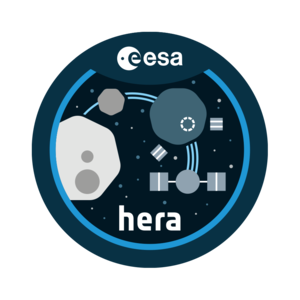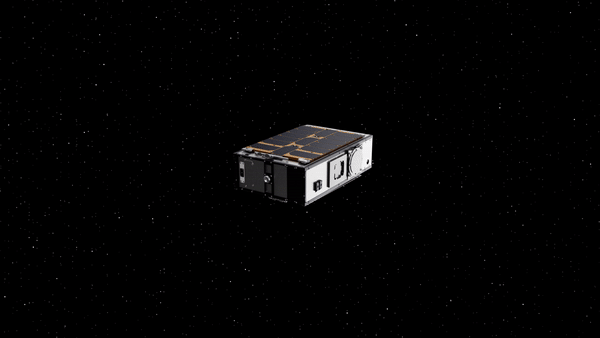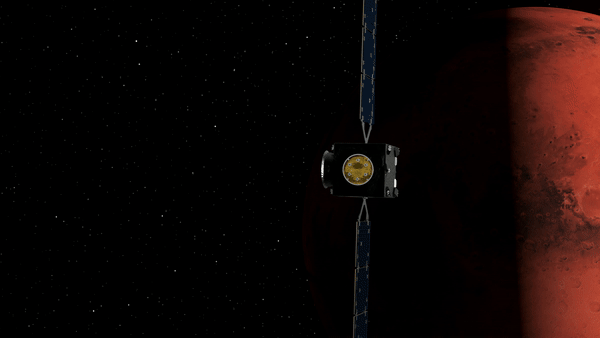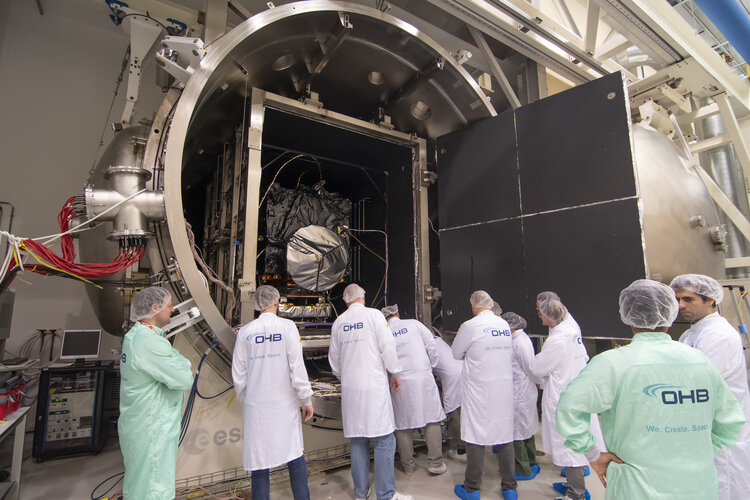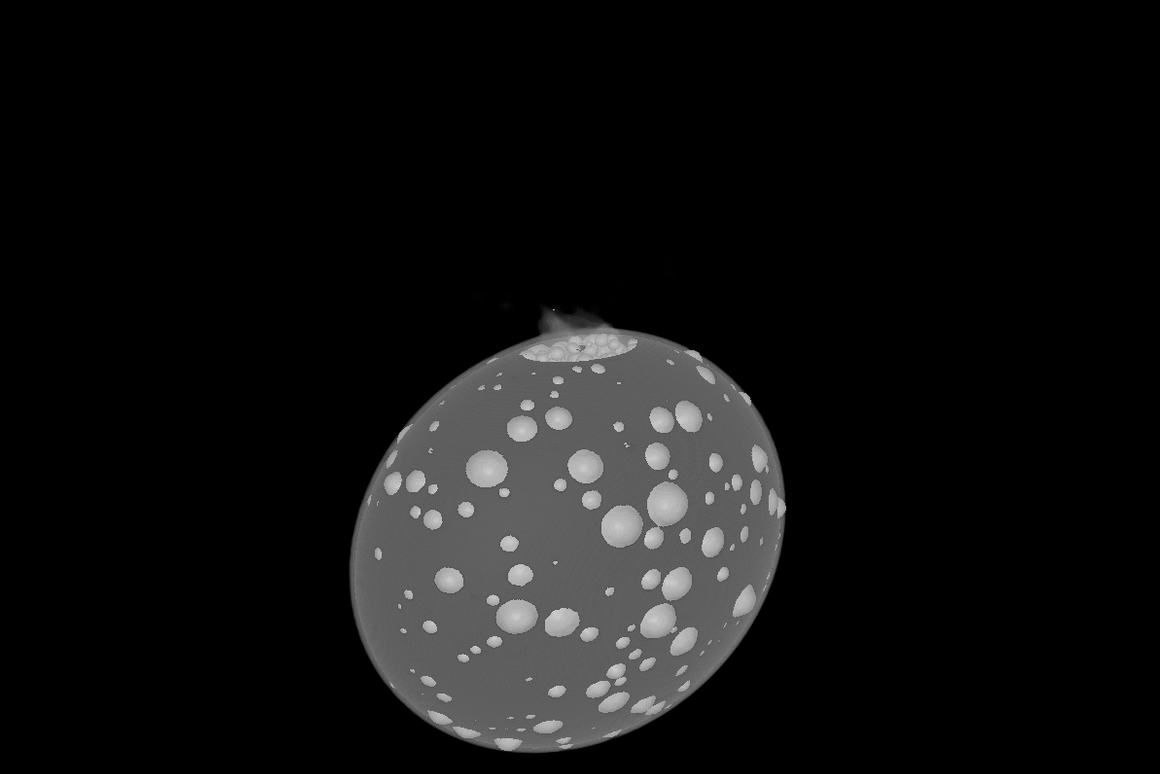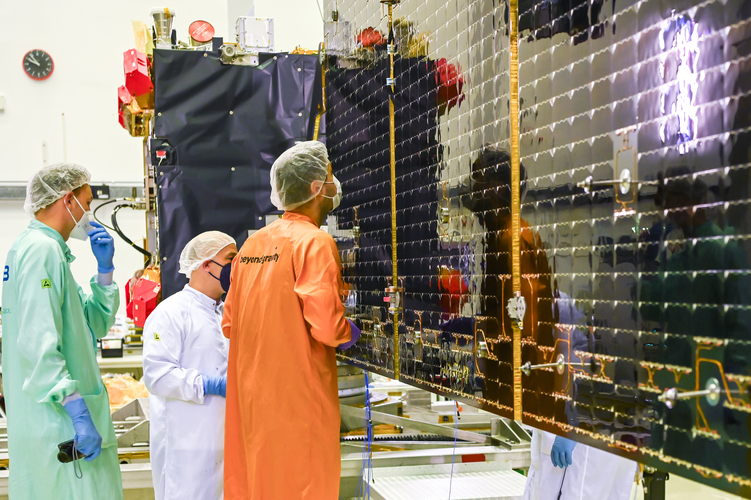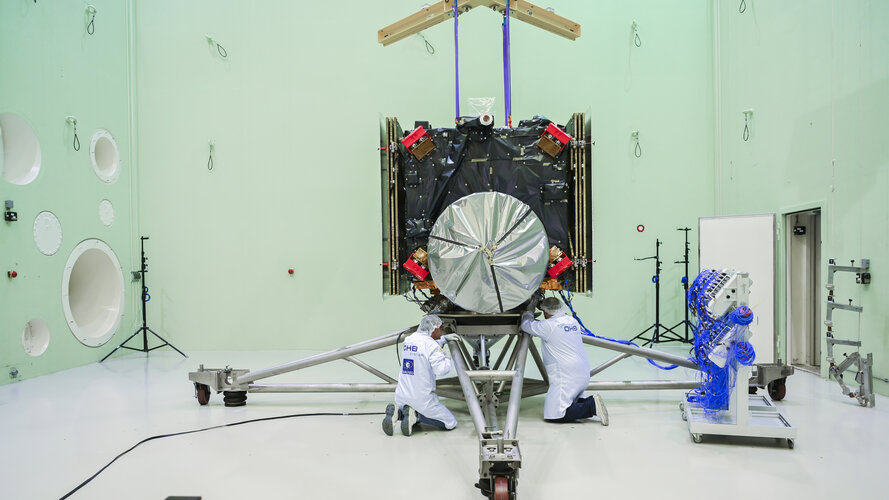Virtual flying lessons for Hera asteroid mission
As ESA’s Hera spacecraft for planetary defence goes through pre-flight testing, the system that will steer it around its target binary asteroid system is also undergoing its final checks for space.

Validation of the mission’s Guidance Navigation and Control system’s readiness for proximity operations within this challenging, ultra-low gravity environment through a long series of virtual manoeuvres, carried out in parallel in Spain and Germany.
At the headquarters of Guidance Navigation and Control (GNC) system developer GMV in Madrid, a replica of Hera’s On-Board Computer is currently being put through proximity operations around a model asteroid imaged with a camera, for maximum realism, with other sensors and actuators emulated using customised ‘check-out’ equipment.
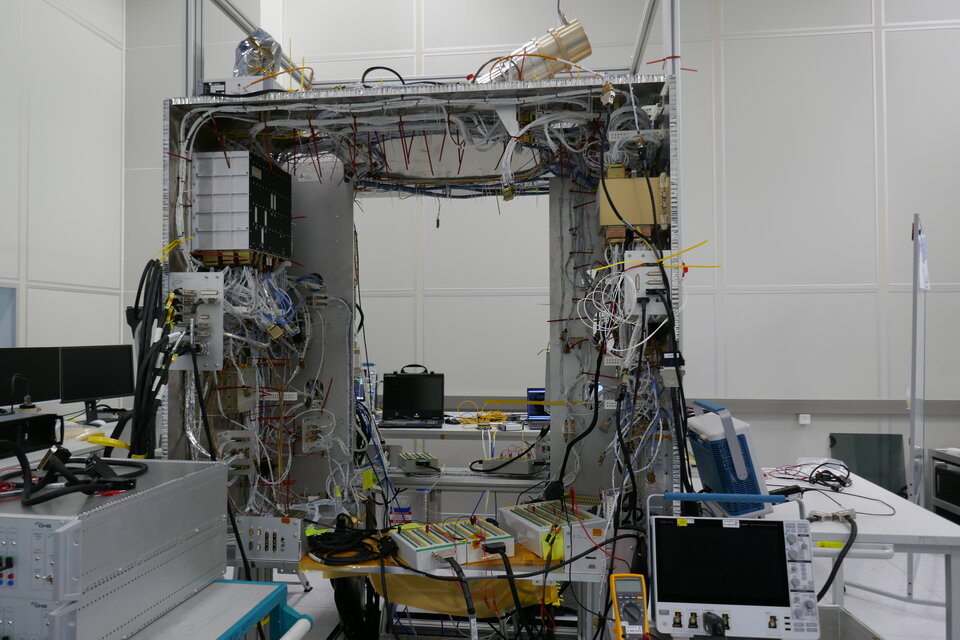
Meanwhile at the premises of spacecraft manufacturer OHB in Bremen, tests are taking place using a full-scale hardware replica of the spacecraft, called the Hera Avionics Test Bench.
“The system for Hera’s interplanetary cruise phase – which of course is the most critical to be ready for launch – is now fully tested using the actual spacecraft flight model,” explains ESA GNC engineer Jesus Gil Fernandez.
“This phase will end at asteroid arrival when camera images will be used to distinguish the asteroid from background stars by spotting its gradual motion across successive images. GNC for the follow-on proximity operations phase is what we are concentrating on now, involving the spacecraft initially coming as close as 30 km from the asteroid pair, then much closer later on, down to 1 km.”

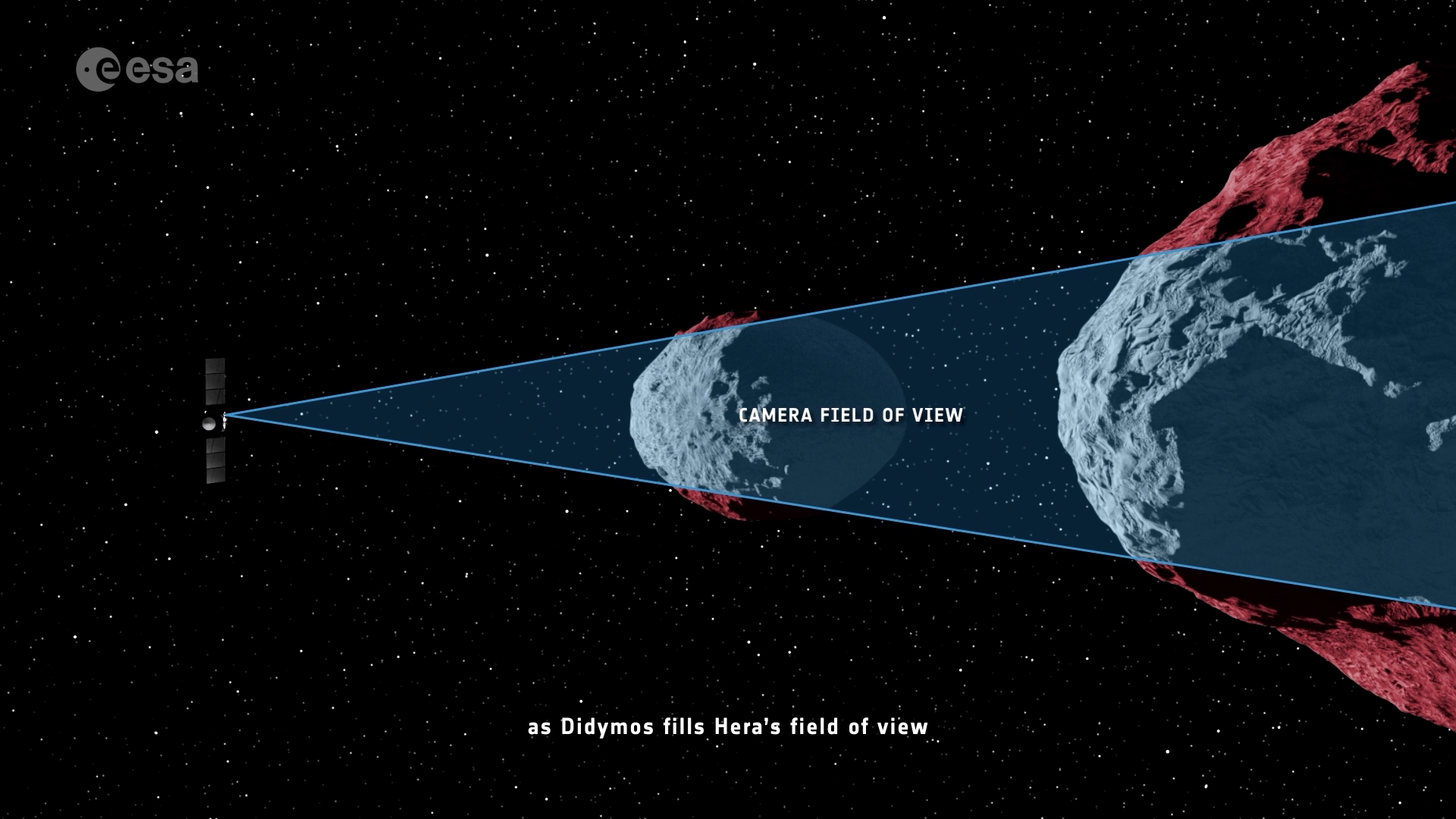
Access the video
Alien, ultra-low gravity environment
Following its lift-off this October, Hera is headed for a distinctively alien environment. After a two-year cruise through space, including a Mars flyby that will be used to take science observations of Deimos, the spacecraft will rendezvous with the Didymos binary asteroid system: the Dimorphos moonlet, about the size of the Great Pyramid of Giza, is in orbit about 1.2 km away from the mountain-sized Didymos main body.
The combined gravity fields of these two asteroids are tens of thousands of times weaker than Earth’s.

Adding to the exotic nature of this destination, Dimorphos has already undergone a change of orbit around Didymos, after NASA’s DART spacecraft impacted with it in September 2022. And this impact is likely to have reshaped the asteroid in dramatic fashion.
Data fusion for environmental mapping
To operate safely around Didymos, Hera has a high degree of onboard autonomy. Its Guidance, Navigation and Control (GNC) system is designed to fuse data from various sources to build up a coherent picture of its surroundings, in a similar approach to self-driving cars.

“Its main data source will be its main Asteroid Framing Camera, whose images are being used both for science and navigation,” adds Jesus. “These images will be combined with other inputs to make a robust estimate of its position, notably the mission’s PALT-H laser altimeter, which bounces down laser pulses to the asteroid’s surface, as well as inertial sensors. This GNC system is designed to be operated manually from the ground initially, but once Hera’s CubeSats are deployed, autonomous navigation will be needed to fulfil core mission objectives.”
During proximity operations, Hera will keep Didymos framed in its camera as an overall reference point, detecting the contrast between the asteroid’s edges and the deep space around it. The detected shape will be compared with a predicted spherical model. Later on, when the spacecraft comes closer than about 10 km from Didymos and more than 2 km above Dimorphos, an image processing technique called ‘centre of brightness’ will be used, focused on the average position of Sun-illuminated pixels, due to the smaller asteroid's complex and uncertain shape.

Hyperbolic arcs to maintain position
The gravity levels of the two asteroids are too low for the spacecraft to go into orbit in any traditional sense. Instead (borrowing a technique from ESA’s Rosetta comet-chaser) Hera will fly in ‘hyperbolic arcs’ – resembling a series of alternating flybys, reversed by regular thruster firings every three to four days. In the case of any normal mission, this amount of repeat velocity changes would soon exhaust its propellant tanks, but the gravity level around Didymos is so low that Hera will only be flying at a typical relative velocity of around 12 cm per second.
“Hera’s hyperbolic arcs are designed so that if a thruster firing has a small error then the spacecraft would keep at a safe distance from the asteroids anyway,” adds Jesus. “However, the low velocities involved mean that the orbital manoeuvres that bring Hera very close to the asteroids need to be executed very accurately, otherwise there might still be a collision risk. Thus, the GNC includes an autonomous trajectory correction system, plus an autonomous collision risk estimation system empowered to perform collision avoidance manoeuvres as needed.”

Surface feature tracking
Hera’s self-driving autonomy will really come into its own as the spacecraft nears the asteroids later in its mission, Jesus explains: “Once we come closer than 2 km then Dimorphos will fill the camera’s field of view. Then comes the most ambitious navigation mode of all, based on autonomous surface feature tracking with no absolute reference. This will be a matter of imaging the same features – such as boulders and craters – in successive pictures to gain a sense of Hera’s altitude and trajectory with respect to the surface.”
Feature identification and mapping will also be used to derive the mass of Dimorphos, although this technique will be performed from the ground rather than aboard the spacecraft.

Mission controllers will measure the ‘wobble’ the moonlet causes to its parent, relative to the common centre of gravity of the overall Didymos system. This will be achieved by identifying small metre-scale variations in the rotation of fixed landmarks around this centre of gravity over time.
GNC testing of some of the modes in this final experimental phase will continue after launch, to prepare the spacecraft ahead of its October 2026 arrival at Didymos.

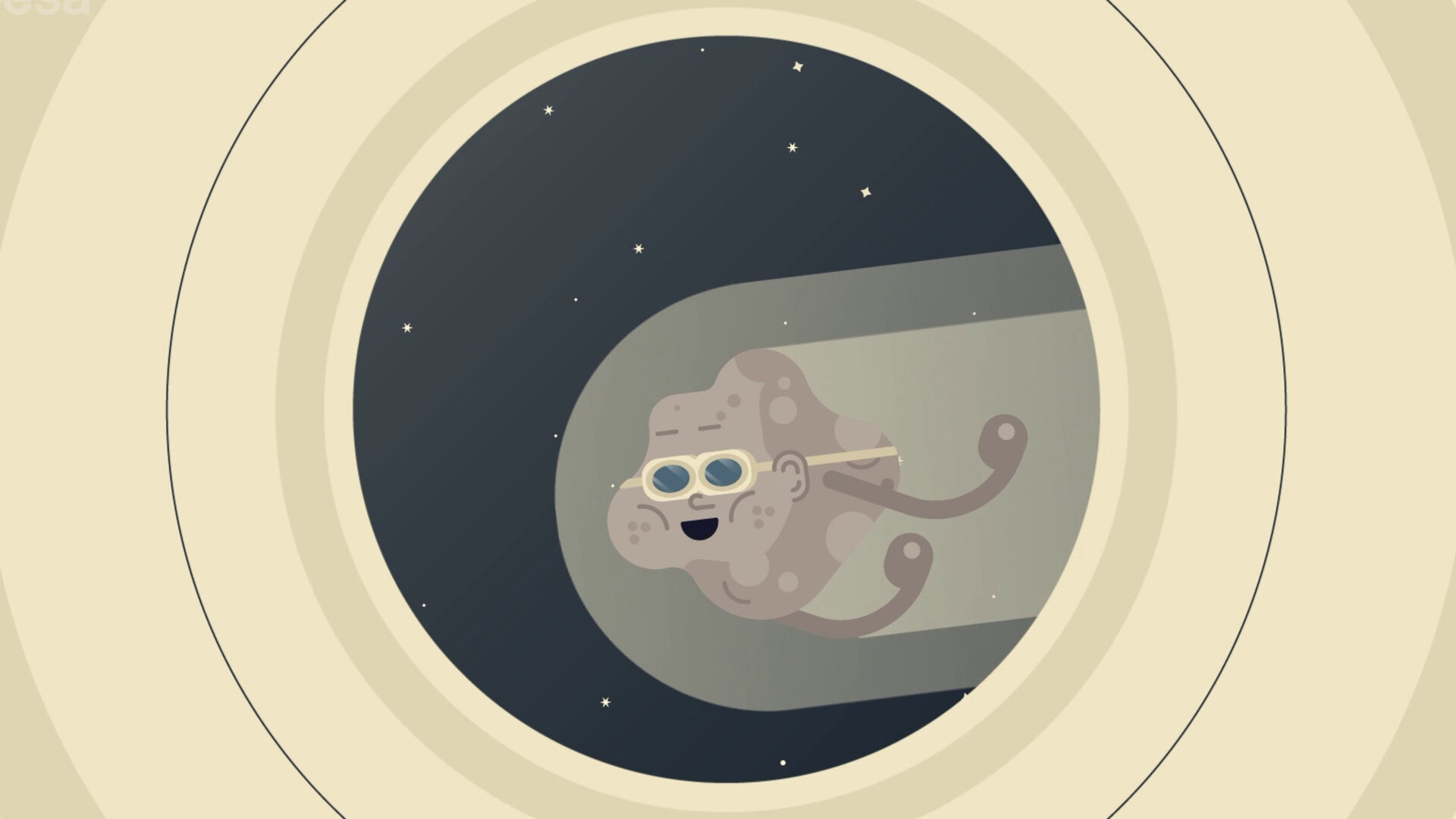
Access the video












